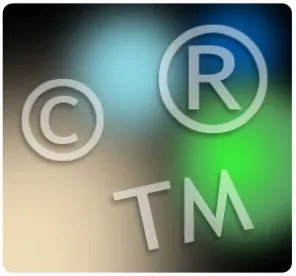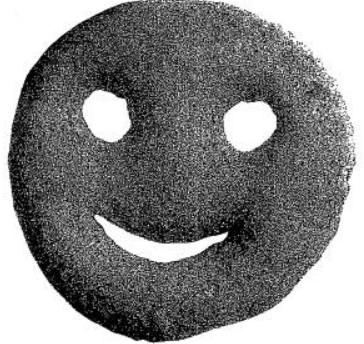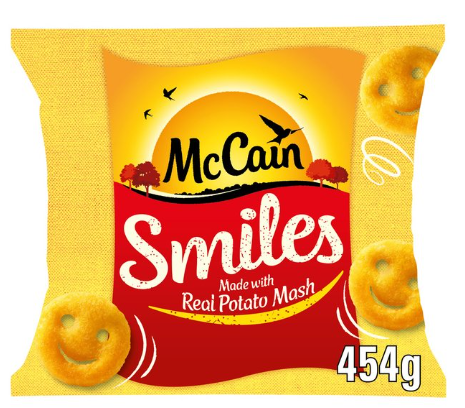We are used to decisions about non-traditional trade marks not deserving protection in the European Union, leading to the inevitable conclusion that non-traditional trade marks can be difficult to register and keep on the register.
The recent McCain decision of the EU General Court seems to go into the opposite direction, providing some guidance on which proof of use will be sufficient for a non-traditional trade mark to stay on the EU register (see here).
Background
McCain GmbH applied to register the below smiley potato chip shape (known as the Smiles) for “pre-fried potato croquettes and mashed potato products, deep-frozen” in class 29 and EU trade mark 1801166 reached registration in 2001 (the “Mark”).
In 2018, Agrarfrost GmbH & Co. KG, a German food company selling smile-shaped potato chips (see here) submitted a request for revocation based on non-use of the Mark.
The EUIPO found that the Mark had been genuinely used for an uninterrupted period of five years and the EUIPO Fifth Board of Appeal confirmed the first instance judgment as it was satisfied that the conditions related to the duration, place and extent of use were met by McCain, as the Mark had been used in accordance with the trade mark functions and in a form which did not alter its distinctive character.
Agrarfrost GmbH appealed the EUIPO decision before the General Court based on insufficient examination of the degree of distinctive character of that Mark and incorrect assessment of the evidence of use produced by McCain.
The General Court Decision
The EU Trade Mark Regulation 2017/1001 provides that evidence of use must relate to the place, duration, extent and nature of the use which has been made of the trade mark for the goods or services for which it is registered and is limited to the production of supporting documents such as, for example, packaging, labels, price lists, catalogues, invoices, photographs, advertisements in newspapers, and the written declarations.
Recent case law suggests that although the ability of a three-dimensional mark to indicate the commercial origin of the goods and services that it designates should be assessed according to the same criteria as those applicable to traditional marks, the perception of the relevant public is not necessarily the same.
In this case, the General Court held that McCain promoted its potato chips through numerous advertising campaigns, featuring the Mark on the packaging of the products or transparent packaging that allowed consumers to directly see the Mark applied to the products. In addition, the television advertisements broadcast in Germany, France and Italy as well as Facebook advertisements clearly highlighted the shape of the product corresponding to the Mark.
Furthermore, market studies submitted by McCain smiley shaped frozen potato chips are not widespread in the market and 30% of respondents attribute the Mark to McCain. Thus, the Mark differs significantly from the norms of the food sector.
Lastly, as to the asserted alteration of the distinctive character of the Mark as registered, the General Court confirmed that the mere addition of a colour does not alter the distinctive character of the Mark, registered in black and white and the presence of the word mark SMILES appears as an independent element which does not form a unit with the Mark.
Takeaways
This case finally provides right holders with some comfort in connection with non-traditional marks, suggesting that an achievable standard of evidence of use will be sufficient to maintain a registration alive in the EU after the first five years.
Packaging and advertising putting emphasis on a mark (e.g. the shape of the product) are key to establish that such mark is able to function as an indication of origin and, on the much debated topic of market studies, right holders will be glad to hear that there is no fixed percentage threshold relating to the degree of recognition of a mark to demonstrate its use and function. Therefore, even if such studies are not perfect or highly convincing, they can still provide useful evidence alongside traditional advertising and sale figures.
As brands across industries are increasingly seeking to protect non-traditional marks, this is an area worth monitoring closely to identify which shapes, in the end, will pass the test of marks able to function as a badge of origin both at the examination and revocation stage.




 />i
/>i


